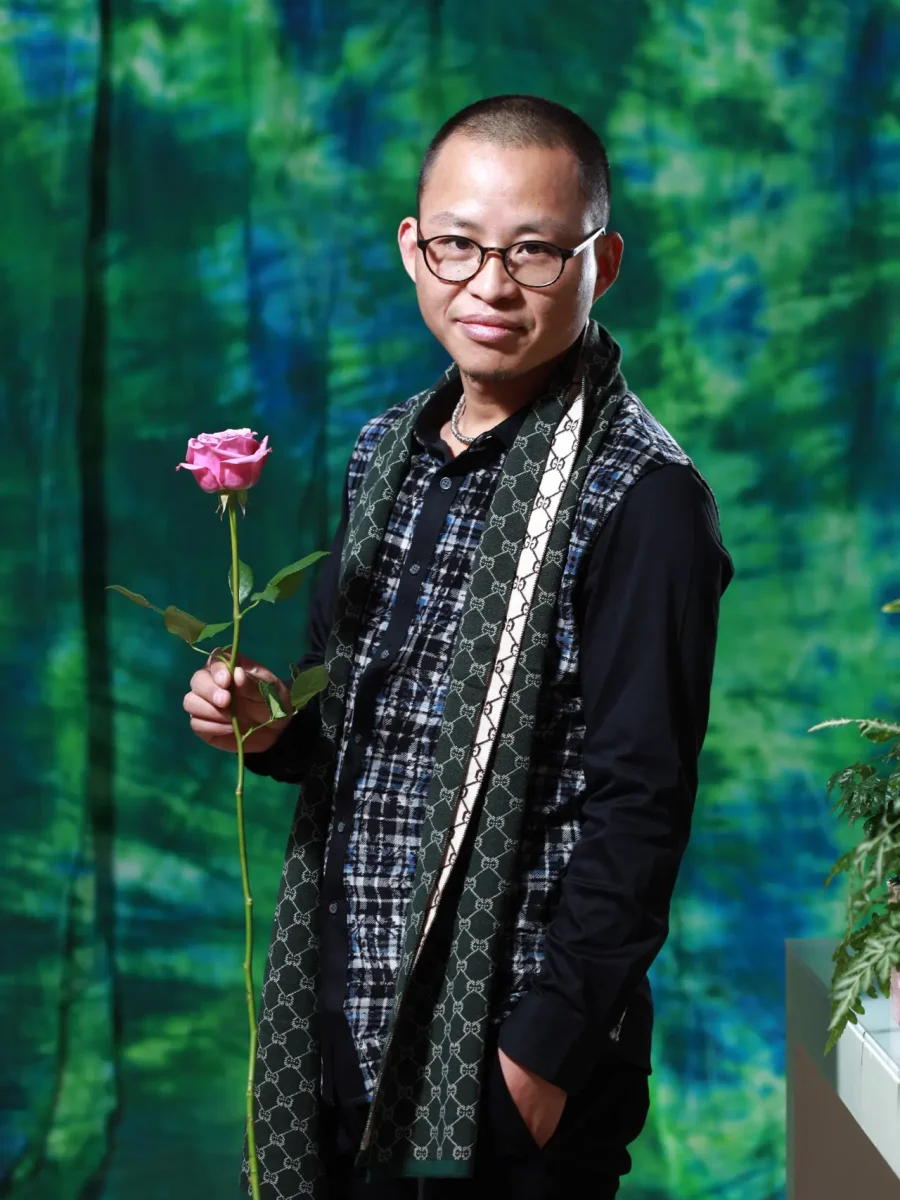Widely recognized for his fusion of natural inspiration and refined artistic technique, Ni Zhi Xiang has developed a distinctive floral design language that bridges Eastern aesthetics with contemporary composition. Representing China for the third time at the World Cup, he brings decades of creative evolution to the stage.‘
‘In 1998, I was young and working in a wholesale flower market in Nanjing. While assembling a simple flower basket, a few florists passed by. At a glance they sneered, ‘This is supposed to be floral design? It’s awful.’ Flushing with embarrassment, I kept quiet. Deep inside, I made a silent promise: one day, I would master floral art – and go beyond the judgments of others.’
‘I began searching every bookstore in the city. Eventually, I found a single title: Basic Floral Arrangement. I treated it like gold. After that, I bought everything I could find on design, structure, botany, colour theory of floral design. During the day I worked in a flower shop; at night I studied under a lamp until early morning.’
‘The following year, I entered my first competition – the Nanjing City Floral Design Contest – and won. That gave me the courage to continue. I joined competitions all over China, took courses from World Cup champions like David Denyer and Per Benjamin, and studied space design and three-dimensional composition at Nanjing University of the Arts. That education fundamentally shaped how I see and use form.’
‘Since then, I’ve won the China selection rounds of the World Cup three times and have already stood twice on the world stage. But for me, it was never just about competing. I wanted to build a design language that expresses Eastern aesthetics – deeply rooted in nature, quietly powerful.’
‘In 2011, after coming across the European ‘natural style’, I began to think seriously about how to create something uniquely ours. I travelled through reed marshes, countryside fields, and tropical rainforests, simply watching how plants grow freely. The more I observed, the more I understood nature is the best teacher – it became my philosophy of life.’
‘That insight became the foundation for what I now call the Oriental Natural Style. It consists of five main series – Water, Pastoral, Forest, Rainforest, and Structural – each drawing from different elements of the natural world and the spatial logic. Since its launch in 2013, the system has taught over 30.000 students and reached more than a million followers online.’
‘This year, as I return to the World Cup for the third time, my goal remains simple: if someone, somewhere in the world, remembers my design after seeing it – then that, for me, is the true victory.’
